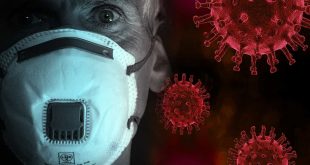Opinion

The curve is flat, but new modelling shows that a return to normal could bring the virus back unless we remain vigilant about social distancing.
Stephen DuckettContributor
It has been five months since the first coronavirus case in Australia. Since then, the combined efforts of the federal and state governments, and the people they represent, have prevented us from experiencing the disaster that is now playing out around the world.
COVID-19 didn’t fundamentally change. We did. The virus can still spread the way it has in China, then in Italy, and then the United States and the United Kingdom and Brazil, and so on, around the globe. It was stopped by our behaviour, which slowed the spread and flattened the curve.
We stopped going to major events. We greeted each other with a nod instead of a shake at work or at school or in the park. And then we stopped going into work or into school. We stopped eating in at cafes and restaurants. We stopped going to the park. Our lockdowns and social distancing efforts have driven the number of active COVID-19 cases in the community towards zero.
When our perceptions of risk are low, our behaviour might slip back to pre-pandemic ways.
Every day, new cases are now discovered by the handful rather than by the hundreds. In Australia, the media can report stories of individual new cases, in contrast to the US and the UK where daily new cases are still in the thousands.
But vigilance is needed, as shown in the Victorian government’s tightening of restrictions in response to the recent increases in new cases in that state,
This is not unexpected. In our new report, Grattan Institute uses a model to explore the risks we face in coming out of lockdown. It shows that as more of us return to work, and to restaurants, shops, and events, our behaviour is critical.
When our perceptions of risk are low, our behaviour might slip back to pre-pandemic ways. We might revert to handshakes and hugs, to standing close to each other at a coffee queue, and to going to work with a bit of a cold. Each of these moments provides the coronavirus an opportunity to spread.
Reducing the risk
Indoor workplaces with shared spaces – kitchens, bathrooms and elevators – provide many such chances for the virus to spread. Minimising the number of people in a workplace, by staggering office hours or regularly doing work from home, can reduce this risk.
Ensuring that people with COVID-19 symptoms can stay away from work is a must. People in precarious casual employment, for whom missing work may mean going without money, should be supported by government programs – like that introduced in Queensland – to stay at home when they need to.
Our modelling shows that when fewer people return to the workplace – and take social distancing precautions when they do so – the chance of uncontrolled workplace outbreaks is low. But it’s higher when the return to work is rushed and careless.
If you do get COVID-19, you will be asked who you’ve been in contact with in recent days. The task of remembering the people you interacted with is easier when your time was spent at home or in the workplace. But it is much harder if it also involved a trip to a restaurant, before jumping on a crowded train to go to a football match with 20,000 others.
The restrictions currently in place at pubs and restaurants help by keeping track of who sat where and when. This practice must be maintained as we come out of the lockdown. Without it, a night out can turn into an outbreak.
As more people go out, the future path of COVID-19 is less sure. There are more plausible scenarios that involve outbreaks, and more that lead to a second wave of infection.
How the next few months will play out in Australia is uncertain. The risks of outbreaks and a second wave are there. State and territory governments must actively monitor cases in local areas. They must be prepared to act decisively to control major outbreaks.
Local lockdowns should be considered and the mechanics – the threshold of cases for a lockdown, who can enter and exit the affected area, what happens to workplaces and schools and pubs and clubs – must be communicated with the public in advance of outbreaks occurring.
This will ensure that people know what to expect and how to react. It will also remind the public of the risks of COVID-19 spreading: if there is an outbreak, lockdowns in some form or another will have to return.
Australians have given themselves a magnificent advantage. A return to near-normal is in sight. But we must continue to be vigilant. We’re not done yet.
How the coronavirus is changing markets, business and politics.
Coronavirus: Need to know. Our daily reporting, in your inbox.
Stephen Duckett is director of the health program at the Grattan Institute.
 The Argus Report Read about it!
The Argus Report Read about it!





